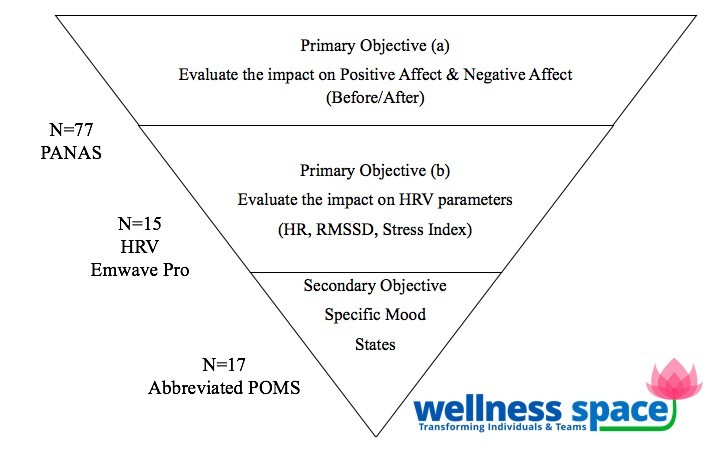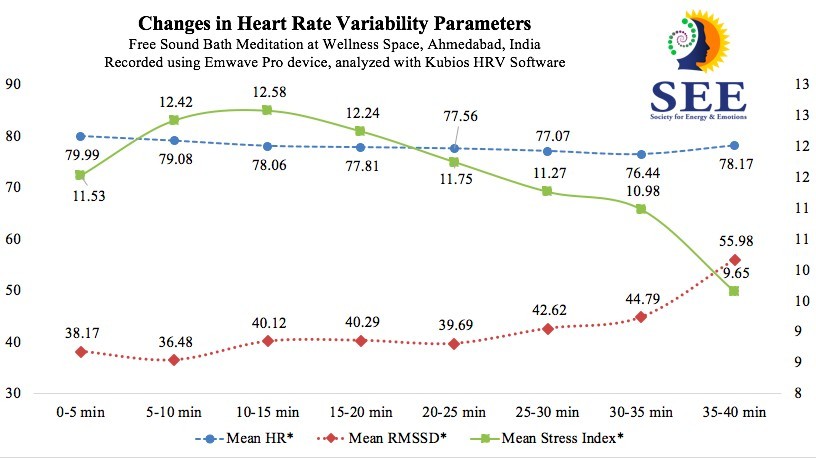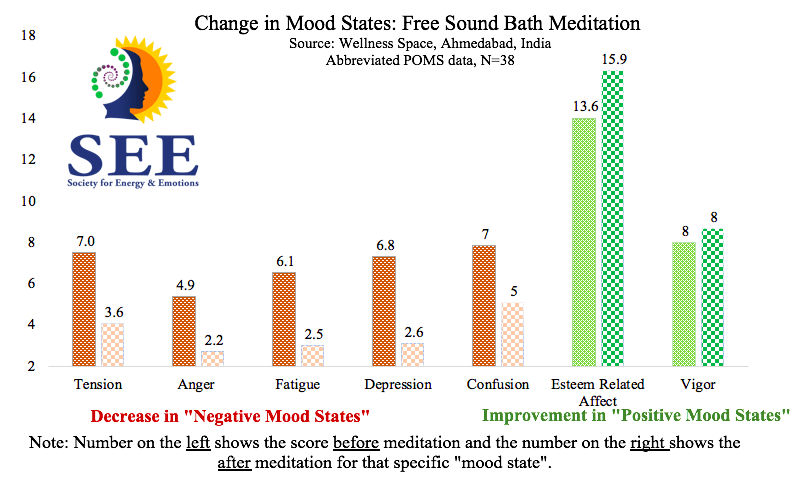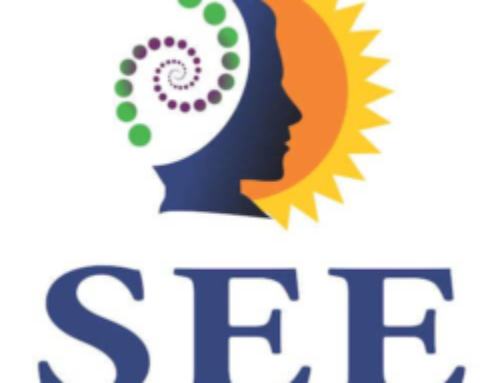While we have been offering Free Sound Bath Meditation at Wellness Space, Ahmedabad, India since last 5 years, the idea of conducting a scientific research came up more recently.
Late last year (2019), two individuals, Saharsh Panchal and Fariburz Irani started working with me (Gunjan Y Trivedi) to do a formal research about how this meditation impacts the mind and the body. Saharsh has a degree in Pharmacy and Masters degree in Public Health (Indian Institute of Public Health, Gandhingar) and Fariburz is a Psychology Major at PDPU (Pt. Deendayal Petroleum University, Gandhinagar). It took us about 3-5 months to pull this together.
The findings show that Sound Bath Meditation with Singing Bowls has a positive impact on mood-related measures and physiology. Some diagrams at the end of the abstract below provide additional info (most of it is not in publication but provides additional insights). The best aspect of these meditation sessions is that we have many young people (in 20s, 30s) visit regularly (See Figure 2 below for details)!
Abstract:
Introduction: Scientific evidence has established the benefits of meditation and sound vibrations on emotional and physiological health.
Aim of the Study: The study explored changes in mood and Heart Rate Variability (HRV) after HSB Sound Bath Meditation on healthy individuals. The objectives of the study were to understand if a 40-minute-long seated HSB Sound Bath Meditation results in changes (a) in mood measured via Positive And Negative Affect Scale (PANAS) and Abbreviated Profile of Mood States (POMS) Survey and (b) in physiological parameters, as measured by HRV.
Methods: The psychological parameters were measured with PANAS (N=77) and Abbreviated POMS, (N=17). The physiology was measured with HRV parameters such as Heart Rate (HR), Stress Index (SI) and Root Mean Square of Standard Deviation (RMSSD) using the EmWave Pro device (N=15). HRV data analysis was conducted with Kubios HRV Premium and analyzed using a paired T-Test.
Results: All the subjects after meditation showed improvement in Positive Affect (PA) and a reduction in Negative Affect (NA). The HRV parameters showed a trend showing overall relaxation with a significant reduction in HR, SI and an increase in RMSSD. Consistent with changes in positive, negative mood and HRV, all the participants showed a reduction in tension, anger, fatigue, depression and confusion and improvement in esteem related affect and vigor.
Conclusion: The findings show that seated HSB Sound Bath Meditation session has a positive impact on mood-related measures and physiology. Future work in this area could explore comparison with a control group and a longer study duration comprising multiple sessions.
Full paper is available by clicking below Citation:
Additional Insights:
While not all the diagrams are part of the study, we have added them below to provide additional insights.
- The methodology of the study is captured below (Figure 1). The unique aspect of the study is the measurement of both the psychological and physiological parameters!
Figure 1: The methodology of the research showing various surveys and physiology measures used and the sample size.
- We established the change in positive and negative moods (called PA: Positive Affect and NA: Negative Affect in PANAS Survey. Please refer to publication for more details or Figure 2 below)
Figure 2: Changes in PANAS Score (Refer to publication link for further details). The visual confirms that for each age group e.g. 20-29, 30-39 and so on, there is a (statistically) significant reduction in negative affect and a similar increase in positive affect.
- We also measured changes in the body via heart rate variability parameters and established that there is a significant reduction in parasympathetic nervous system i.e. equivalent to relaxation response or just plain relaxation! (The details in the link above or summarized in Figure 3 below)
Figure 3: Changes in Heart Rate Variability data throughout the meditation for N=15. The * indicates that when we compare 35-40 mins with 0-5 mins, there is a statistically significant change.
- Finally, we were curious as to which positive and negative moods change and by how much (this was achieved via Abbreviated POMS survey, sample size was eventually increased to 38 after the publication). Figure 4 below.
Figure 4: Abbreviated POMS score. The red bars show negative moods and the green bars show positive moods. Except “Vigor”, all other states had statistically significant changes.



 Figure 2: Changes in PANAS Score (Refer to publication link for further details). The visual confirms that for each age group e.g. 20-29, 30-39 and so on, there is a (statistically) significant reduction in negative affect and a similar increase in positive affect.
Figure 2: Changes in PANAS Score (Refer to publication link for further details). The visual confirms that for each age group e.g. 20-29, 30-39 and so on, there is a (statistically) significant reduction in negative affect and a similar increase in positive affect.






Leave A Comment